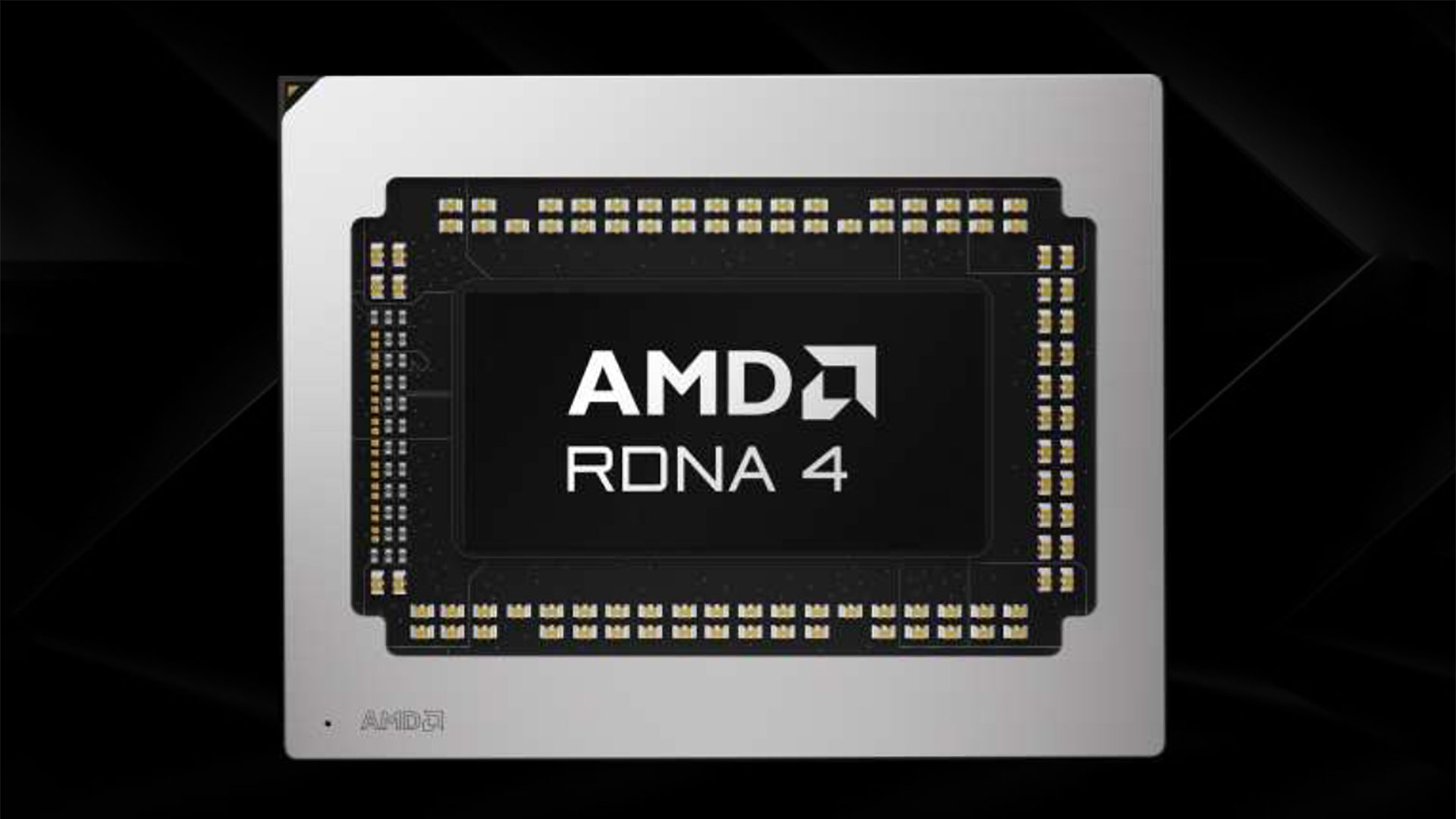
AMD’s RDNA 4 GPUs have seen a few leaks and rumors over the past year, and now AMD has pulled back the curtain a little bit to reveal its next generation Radeon RX 9000-series graphics cards. As expected, AMD will be focusing on the performance-mainstream market, eschewing the extreme end of the performance and pricing ladder — and perhaps skipping the budget segment. Release dates, specifications, and pricing are still under wraps, but at least two of the model names are now official, with two more now effectively confirmed. These will compete with the best graphics cards.
We expect to see early samples of AMD’s upcoming GPUs at CES 2025 this week, but it remains to be seen just how many details will be shared. This is by no means an official launch of the GPUs, and AMD says it’s only “previewing” RDNA 4 at CES 2025. The launch date at present simply says Q1 2025, and that’s for the first two graphics cards in the lineup. We anticipate other models will become available later in the year, perhaps before June but nothing official has been stated at present. Here’s what we know.
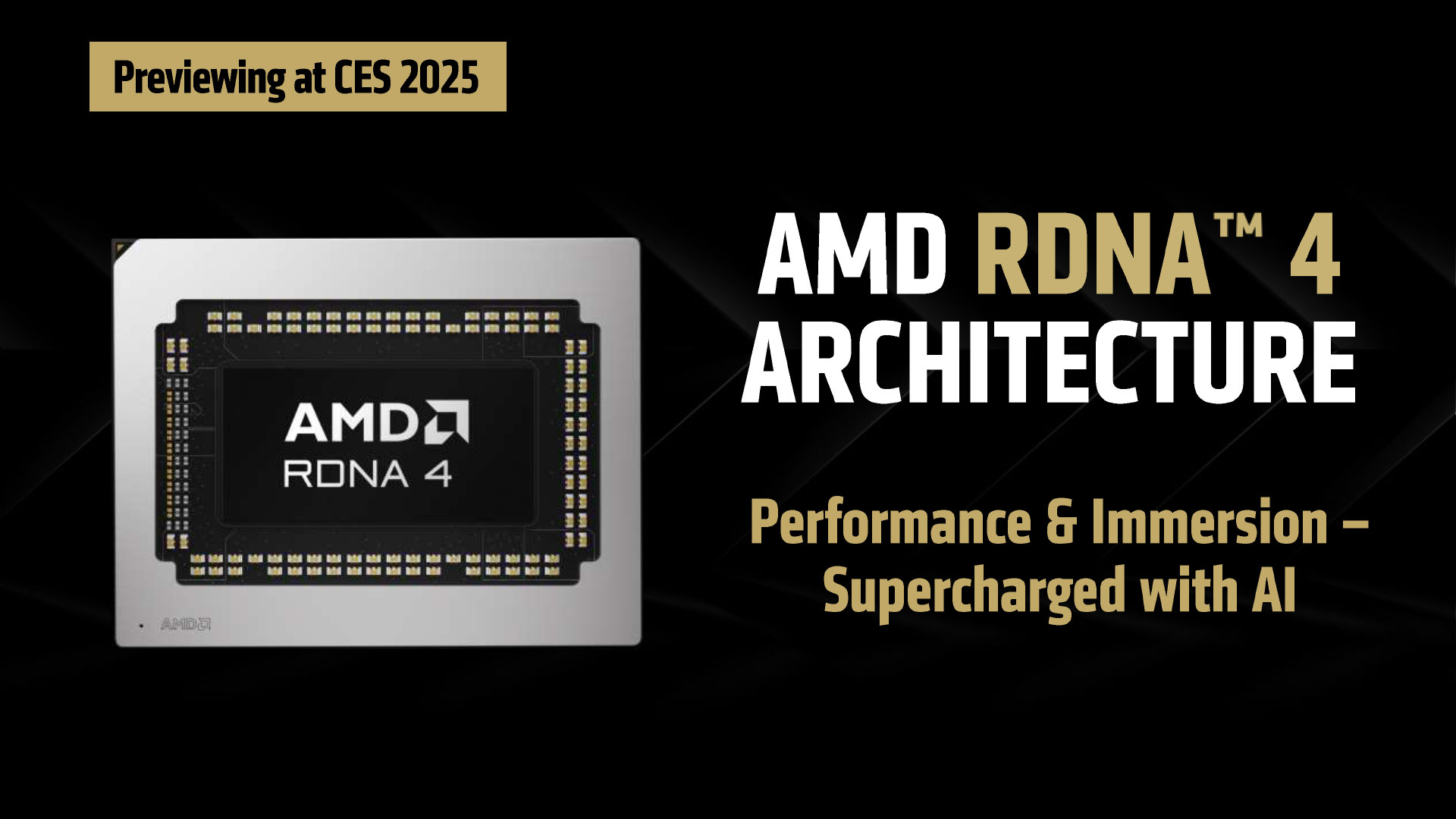
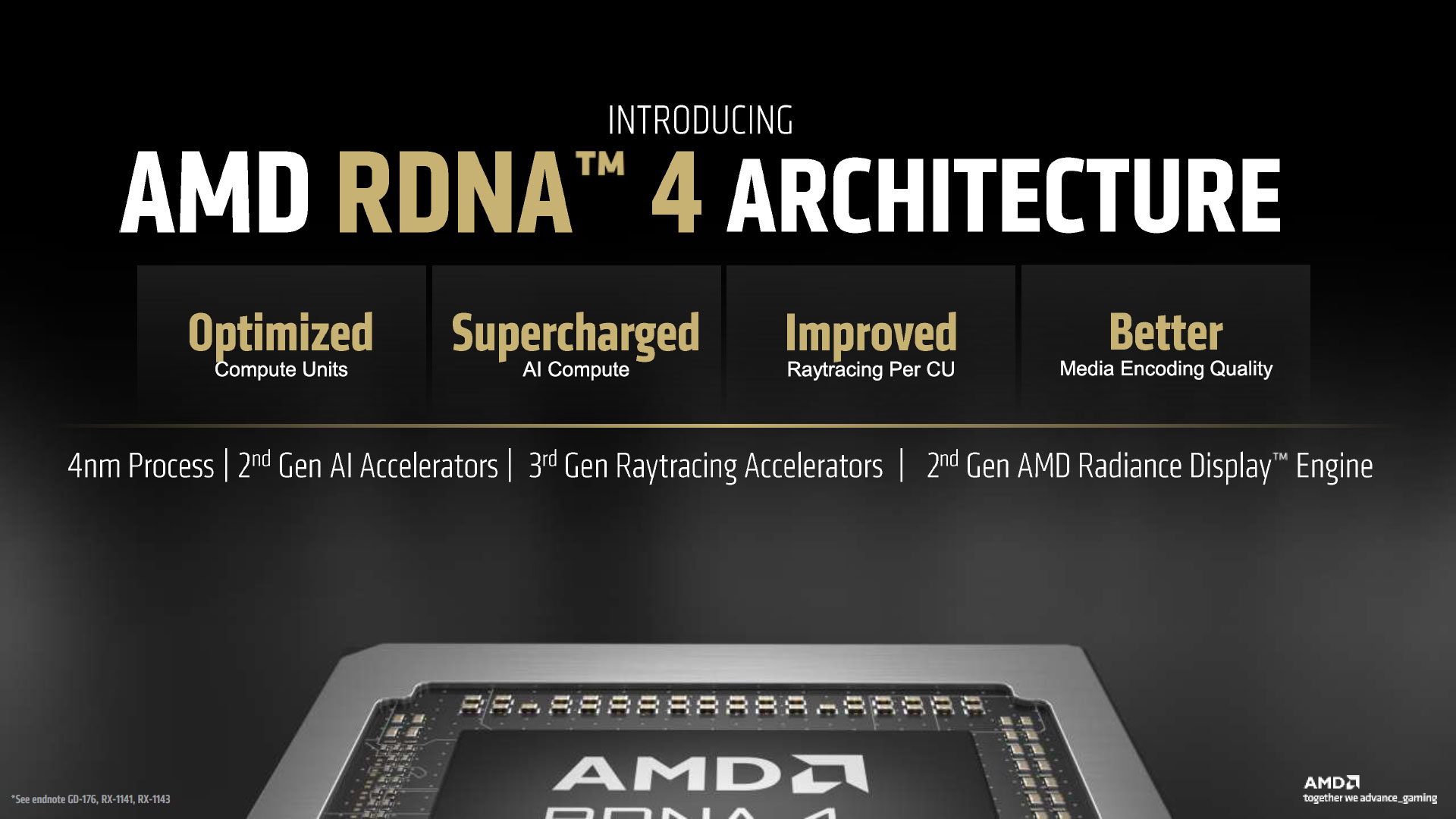
The RDNA 4 architecture name was a given, barring a major change in branding and direction. AMD will move to a 4nm TSMC process node — we don’t know if that’s N4, N4P, or some other variant — which should bring some decent density and efficiency improvements. This will also be the third generation of AMD’s Ray Accelerators, and the second generation of the AI Accelerators and Radiance Display Engine. About the only truly surprising aspect of RDNA 4 is that it took AMD this long to seriously invest in AI cores for its consumer GPUs — the CDNA architectures have had tensor processing units for several years now.
The fundamental changes haven’t been shared, only somewhat nebulous statements. RDNA 4 will have “optimized” compute units (CUs), “supercharged” AI compute, “improved” ray tracing, and “better” media encoding quality. Those are all good things to see in a new GPU architecture, but until we have additional details, and more importantly, until we’ve been able to put everything to the test, these are merely statements and claims.
One interesting question is whether or not AMD will continue to utilize the GPU chiplet approach that it introduced with RDNA 3. There was no discussion of that as yet, and it seems like it could go either way. With RDNA 3, AMD had two larger GPUs, Navi 31 and Navi 32, that used a GCD (Graphics Compute Die) matched with anywhere from three to six MCDs (Memory Cache Dies). The lower tier Navi 33 opted to stick with a monolithic design and an older process node.
RDNA 4 appears to only have two GPUs planned, currently rumored but not confirmed to be called Navi 44 and Navi 48. These should take over for the RX 7600 through RX 7900 XT, based on AMD’s slides, but we don’t have CU counts, memory configurations, or other details at present. We can only hope that AMD will leave the 8GB graphics card era in the past, and if it also uses GDDR7 memory we could even see 3GB chips — meaning 50% more memory capacity for any given interface width, so 12GB on a 128-bit, 18GB on 192-bit, and 24GB on 256-bit. But again, there’s no official information on the memory, cache, or use of chiplets at present.
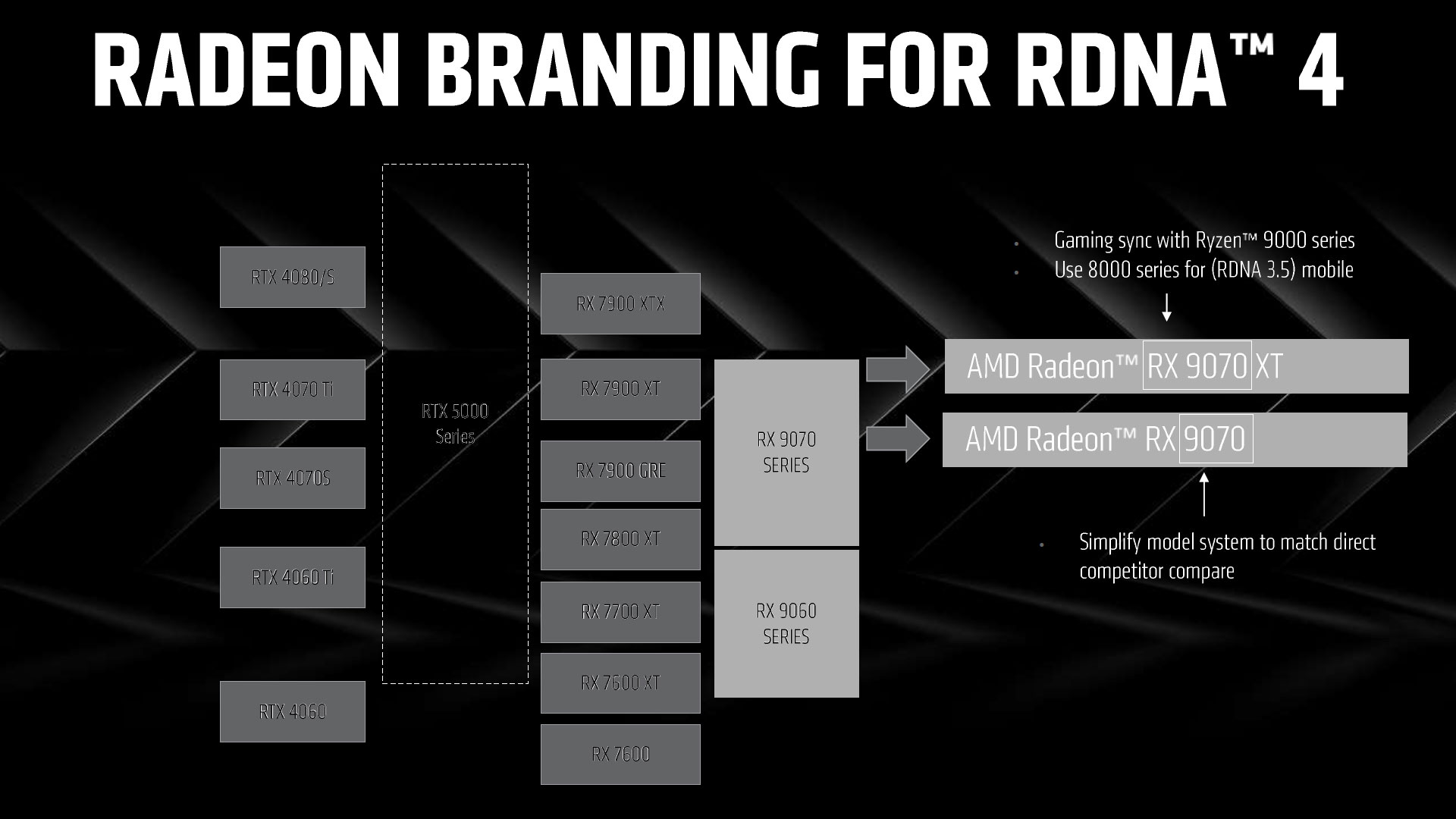
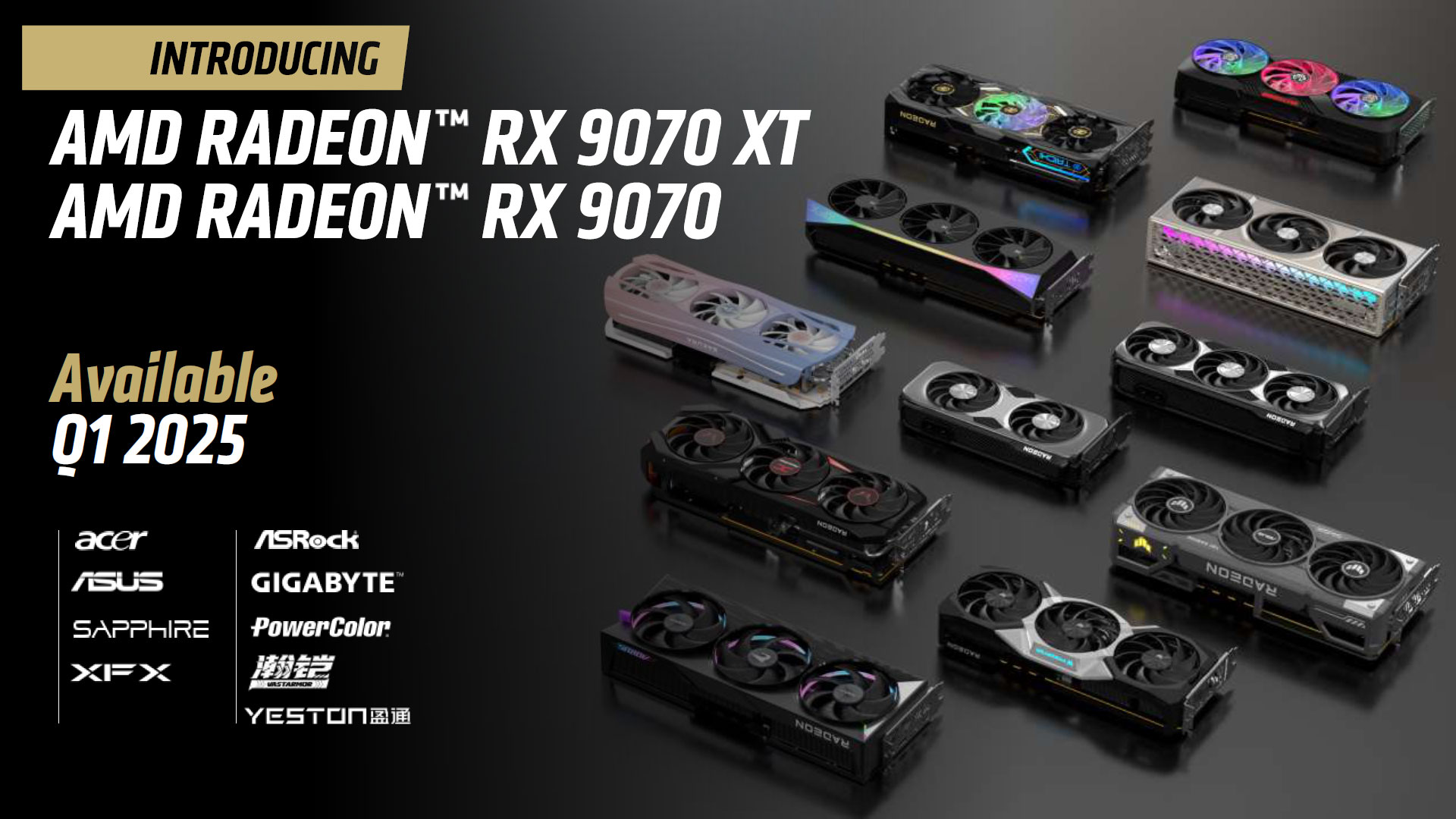
What AMD did officially disclose is the product branding and we would guess four different GPU names. AMD will sort of skip the Radeon 8000-series, leaving that for integrated solutions on mobile devices using the RDNA 3.5 architecture. There won’t be any 8000-series desktop GPUs. Instead, AMD will use Radeon 9000-series branding, aligning its desktop lineup with the 9000-series Ryzen CPUs. It will also shift to using the tens digit to indicate relative performance levels, to match up with Nvidia’s GPU models.
At the top, AMD will have a Radeon RX 9070 XT that should take over from the RX 7900 XT and compete with the RTX 4070 Ti/Ti Super and perhaps the RTX 5070 Ti as well — we’ll need to wait and see official specs to determine where the parts actually match up. Below that will be the vanilla Radeon RX 9070, taking over from the 7900 GRE and 7800 XT and gunning for the RTX 5070 presumably. These are the two confirmed GPUs, with a Q1 2025 release date but no other hard information right now.
AMD also showed the Radeon RX 9060 branding, and presumably we will get at least an RX 9060 XT and an RX 9060. As indicated in the slide, these will take over from the existing RX 7600/7600 XT and the RX 7700 XT. They’ll also compete with Nvidia’s existing RTX 4060 and 4060 Ti cards, and their eventual RTX 5060-class replacements.
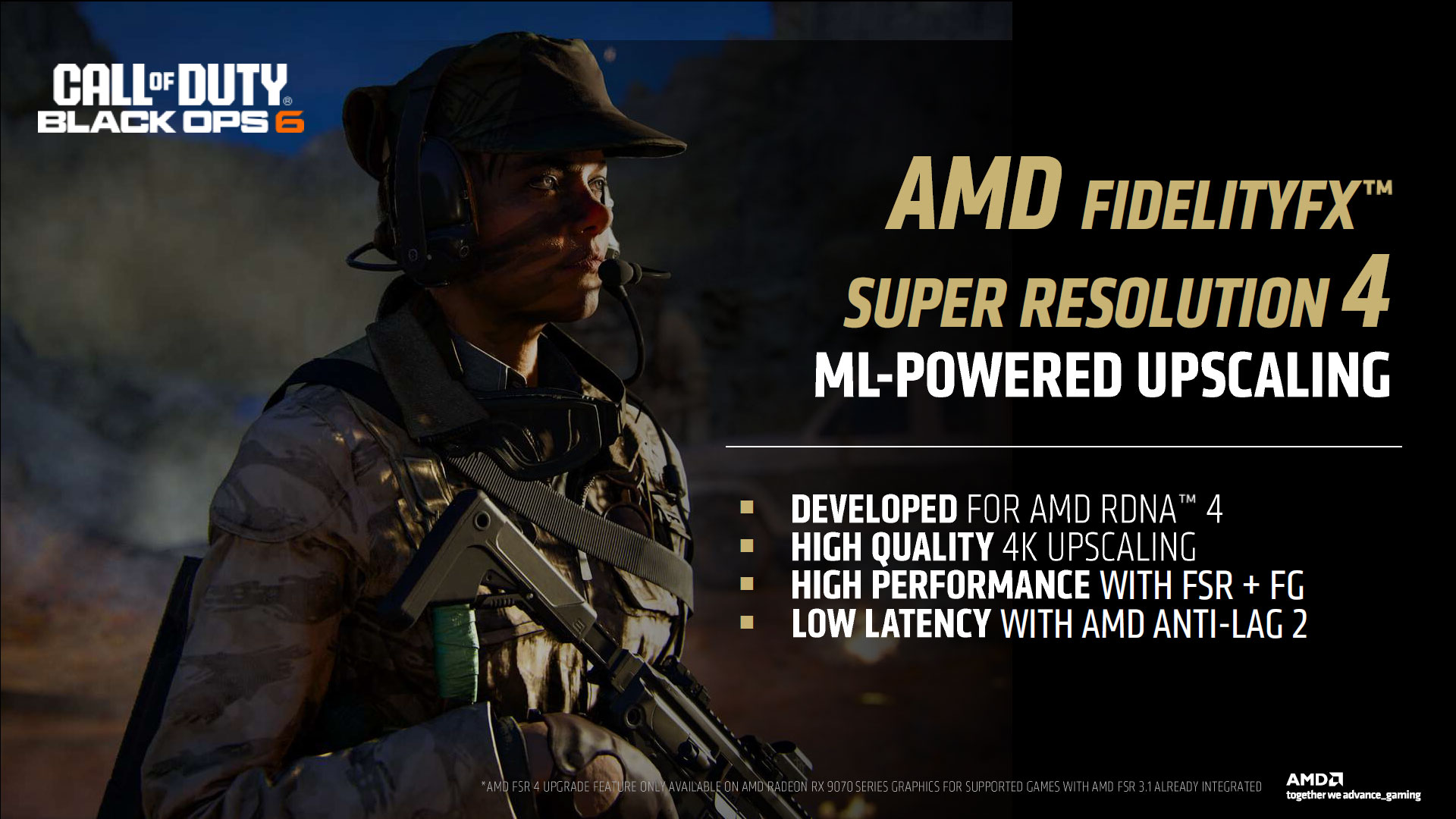
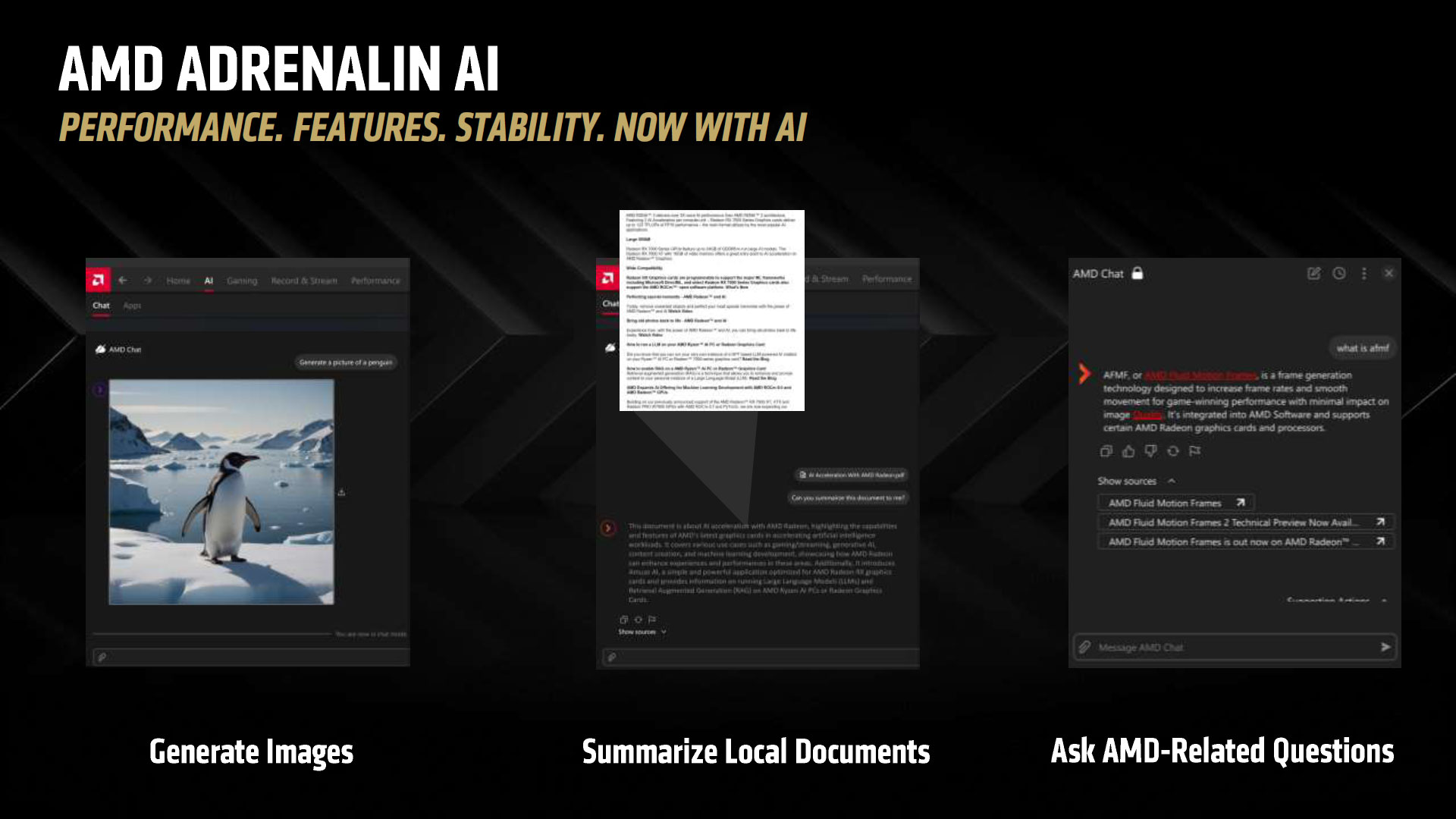
As part of the enhanced AI aspects, AMD also announced its upcoming FSR 4 upscaling technology, which will use the new and improved RDNA 4 AI Accelerators to provide machine-learning-based upscaling. That should make it similar to Nvidia's DLSS and Intel's XeSS, and it appears FSR 4 will be relatively easy to add to existing FSR 3.1 enabled games. Obviously, we'll need the new GPUs before we can test it.
AMD also mentioned some AI-based tools like text summary and image generation will be integrated into its Adrenalin AI suite of software. Whether this will be part of the core GPU drivers package or a separate application isn't entirely clear, but it looks to be similar in principle to some of what Nvidia has done with the Nvidia App.
Who will end up with the best graphics cards when the dust settles? It’s far too early to say, but we’ll be testing the hardware as soon as we’re able. It’s going to be an exciting year for graphics cards by all appearances.







